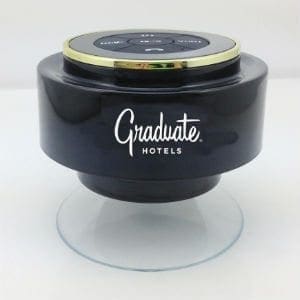Before its acquisitionÊby MarriottÊwas completed last September, hospitality company Starwood Resorts and Hotels WorldwideÊchanged its approach to a problem that many chain hotels face Ñ how to maximize the value of its spending on translation services for its property websites worldwide.
There were two aspects to the question: Was Starwood overspending on the translation of some of its branded websites, relative to how much business it was bringing in from the speakers of those languages? And was it failing to translate other websites and thus losing customers who were turning elsewhere and instead booking stays at properties that offered online information in their native tongues?
It’s not often that hotel executives offer a peek into their thinking about challenges. So it caught Skift’s eye two weeks ago when Ora Solomon, Director, Global Product Management, Digital, gave a presentation about Starwood’s effort at the CMO Digital Insights SummitÊin Atlanta.
Bottom of form
To be sure, the approach Starwood took is not the last word in how hotels can approach similar challenges. In fact, Marriott’s approach to translations will likely be different than what Starwood took, a spokesperson for the merged brands said.
Starwood’s experiment, whatever it’s ultimate fate, illustrates a broader industry trend that’s one of the hotel trends we’re watching in 2017: More and more hotel groups are relying on data instead of instinct to drive decision making.
Putting a more accurate price on translation
Starwood has 1,500 properties around the world, half of which are outside the US. Obviously it has been expensive for the company to translate the individual details of each property across its 11 brands.
To contain costs, its policy had been to provide translations for nearly all of its properties in four common languages Ñ German, French, Spanish, and Japanese Ñ regardless of the revenue that speakers of those languages generate for each of the properties.
It also made rough guesses about when to offer translations in up to seven other languages, such as Simplified Mandarin (which it did for 452 hotels) and Portuguese (which it did for 237 hotels).
The problem was that Starwood wasn’t sure it had the best coverage. For example, its Aloft Charlotte Uptown had received a Japanese translation, even though all nine of its Charlotte’s properties had received less than about $20,000 of revenue from Japanese guests in 2014.
On the other hand, many Italians visit New York City. Yet Starwood had provided few Italian translations for its properties there.
To get the translation mix right, Solomon believed that Starwood needed to Òcome up with a translation model that was scalable, given that non-English revenue share was growing, and competitors were investing to win,Ó she says. At the time, the Starwood sites had 200 million visitors a year, representing about $4 billion a year in revenue.
So in 2015, the company hired a math star on a temporary contract to come up with a more data-driven approach. Along with other Starwood employees, the person came up with a mathematical model that weighs revenue over two years, versus the full on-going cost of translation at the market level, such as of French translation for a hotel in Kansas City, Missouri.
The results were striking. The formula predicted that, for 11 Starwood properties in the San Francisco area, spending on Japanese language translation produce revenue that was, collectively, 42 times the money spent on translation.
In contrast, investing in Japanese translation in Dallas didn’t deliver a good return on investment. Based on the data at the time, the cost of offering translations for the 17 Starwood properties then in Dallas would have meant that every dollar spent on translation would have yielded only a $2 gain in annual revenue.
Similarly, the company had spent on Dutch translation for only two of its properties worldwide. The formula recommended it invest in Dutch translation for 161 properties if Starwood wanted to capture at least 60 per cent of the possible revenue.
In total, approximately $600,000 investment in translation services could produce $45 million in additional revenue from guests who decided to book at Starwood instead of somewhere else that had a website in their native tongue.
The formula also predicted where Starwood could cut back on translation spending without hurting revenue. The company had been translating all of the websites of its properties into Japanese. But by only translating 611 properties that have high inbound traveler volume, the company could capture 97 per cent of the revenue that it would have otherwise.
Overall, by dropping its policy of translating all of its websites into four core languages, the company would save about $300,000 a year without a loss to revenue.
Solomon says the initial results in 2016 for the $600,000 expense on expanded language translation were on target with the forecasted model. The company executed the program in phases, to limit up-front investment. The staged approach delays the effort to analyze the formula’s success until enough time has passed for comparative information.
Solomon says it is already clear that the cuts in the former four core languages did not negatively affect conversion rates online. The decrease in core translation has put minimal revenue at risk. She says, ÒWe didn’t lose as much of the even minimal revenue loss that the model predicted, and we saved money, which we could redeploy.Ó
As with many aspects of theÊMarriott acquisition of Starwood, Marriot says it is Òassessing and evaluating Starwood’s business applications as they would apply to the newly merged companies.Ó A spokesperson says that ÒMarriott has a system for determining the timing and scope of new websites and apps in new languages. Translations are going through that process, and we will await the outcome before commenting further.Ó
Regardless of the fate of its specific experiment, Starwood’s effort underlinesÊone of the major hotel industry trends of this year: Hotels are getting smarter about how to interpret all of the data they have been collecting.
By Sean O’Neill from Skift and IHLA SmartBrief


















